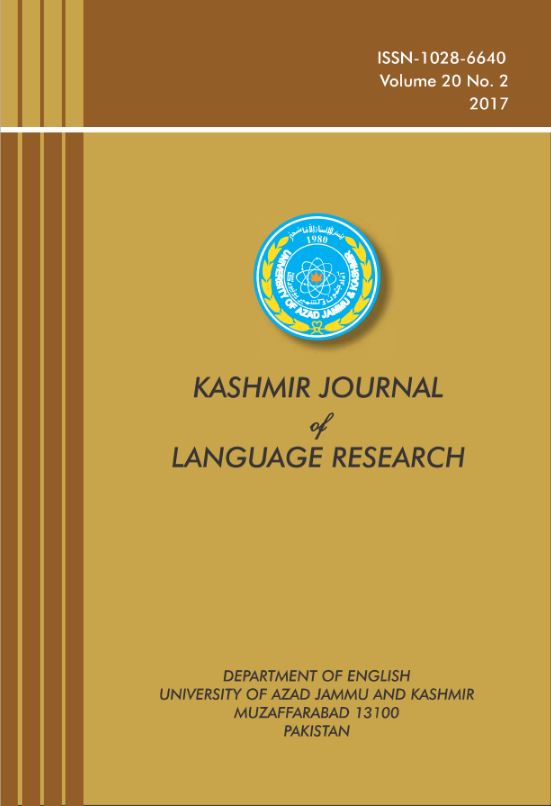Patterns of Variation of Urdu Borrowed Words in English
Keywords:
borrowed words, loanwords, loanblends, loanshiftsAbstract
Contact of English with the languages of its colonized stocks has resulted in the occurrence of a modest number of lexical borrowings from all of them. More than 120 languages endowed towards the present vocabulary of English. Urdu being one of them is the donor of 173 lexical items to English language. Phonetic and semantic contents are borrowed from the donor language. Semantic content is more readily borrowed than phonetic structure. The borrowed semantic content is usually established on indigenous phonetic form. For Example: English word “School” borrowed in Urdu as “Ischool”. Difference in words (donated and borrowed) mainly concern phonological aspect, but completely different lexical item expressing the same meaning also exists. The present study assumes that Urdu borrowed words in English are variants and therefore aims to evaluate Urdu lexical borrowings in English. The corpus of Urdu borrowed words developed from the Oxford Advanced Learners Dictionary, eighth edition forms the sample of the study. The borrowed words are then categorized according to the taxonomy of borrowed items by Haugen (1950), who distinguishes between loanwords (form and meaning are copied completely), loanblends (words consisting of a copied part and a native part), and loanshifts, where only the meaning is copied. Then the grouped lexical items are analyzed for the patterns of variation. The analysis shows that there are three types of variations in the Urdu borrowed words in English. These are syntactical changes, structural changes and phonological changes. Each type also includes sub categories of variations.

Downloads
Published
Issue
Section
License
Copyright (c) 2022 Kashmir Journal of Language Research

This work is licensed under a Creative Commons Attribution 4.0 International License.




